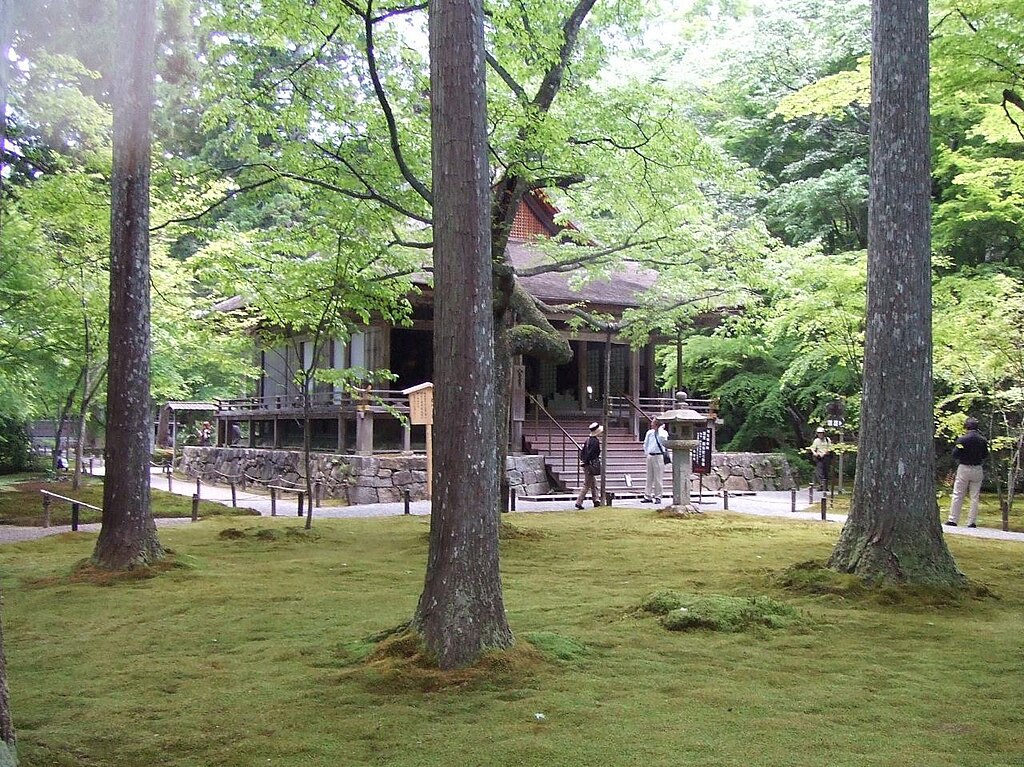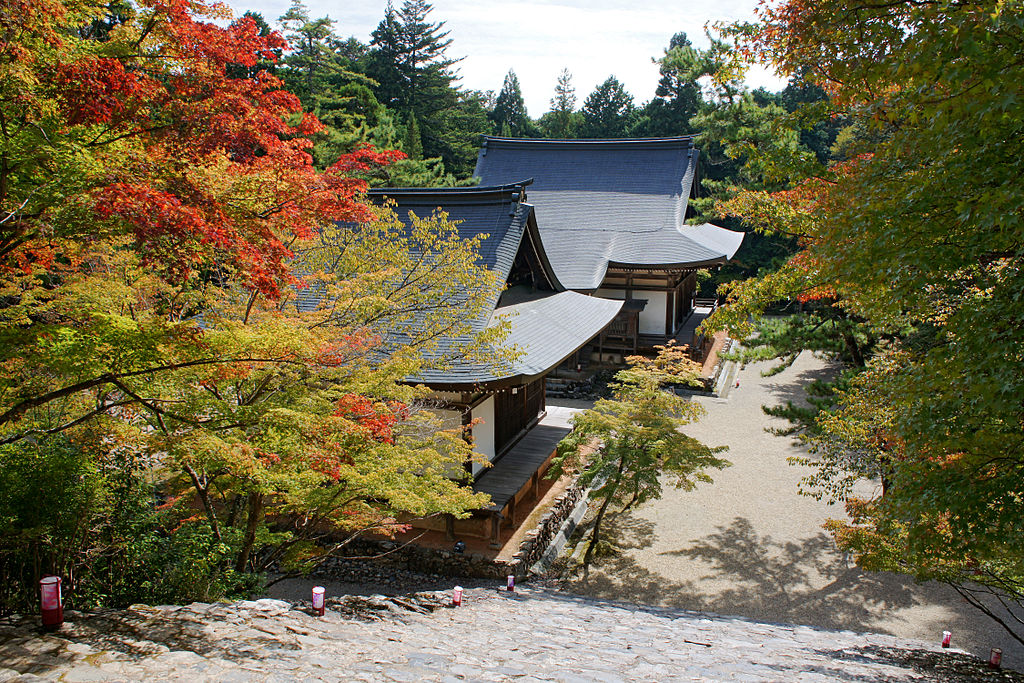What to do on the northern suburbs of Kyoto
The northern suburbs of Kyoto include the villages of Kurama, Kibune, Ohara, Takao and Mount Hieizan.
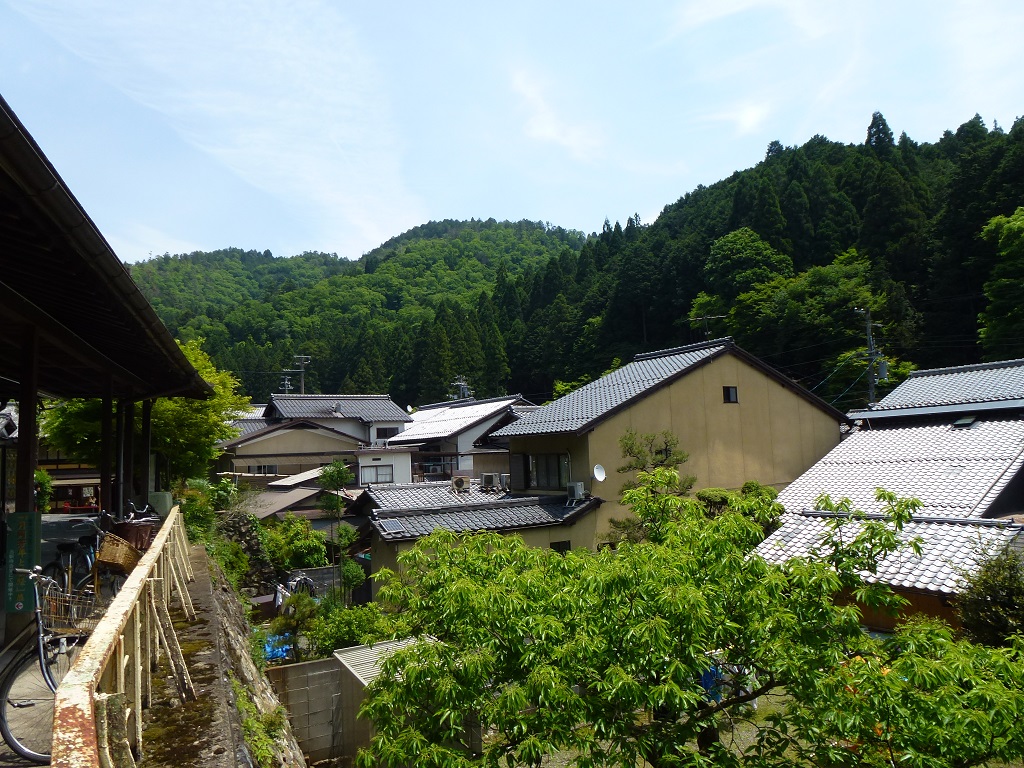
Photo by Japanforeveryone.com
Kurama
Kurama is a picturesque mountain town located in Kyoto Prefecture. The town is home to the famous Kurama Temple, known to be one of the oldest Buddhist temples in Japan with a long history dating back to the 8th century. The temple is famous for its beautiful architecture and serene atmosphere. Kurama is also a popular tourist destination for its hiking trails through the beautiful local nature, which are suitable for everyone and are a true immersion experience in Japanese nature. Kurama is definitely not to be missed for those seeking peace and quiet and natural beauty.
A day pass for all baths costs 2500 Yen, for outdoor baths 1100 Yen.
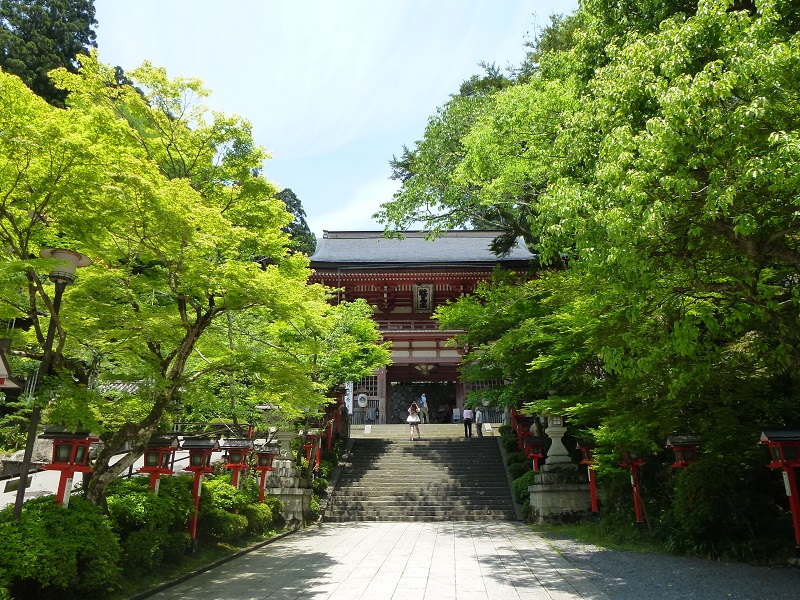
Photo by Japanforeveryone.com
Practical information
| View location on Google Maps | |
| Kurama-dera | |
| Official website |
|
| 9:00-16:00 (the Treasure House is closed from mid-December to February) | |
| No closing days | |
| 300 Yen | |
| From Kyoto Station take the train on the JR Nara Line to Tofukuji Station (2 minutes, 150 Yen). From here take the train on the Keihan Main Line to the Demachi-Yanagi terminus (10 minutes, 270 Yen). From here take the Eizan Railways to Kurama (30 minutes, 430 Yen). From Kurama 30 minutes on foot To get to Demachi-Yanagi station you can get off at the Demachiyanagi ekimae bus stop (lines 4, 17, 102, 201, 203) |
Kibune
Kibune is a charming mountain village in Kyoto Prefecture, famous for its Shinto shrine. Kibune shrine is nestled in the mountains and surrounded by lush forest, creating a magical and spiritual atmosphere. The highlight of the shrine is the annual Candle Festival, held in mid-July, when thousands of stone lanterns are lit along the shrine steps, creating an enchanting light show. Visiting Kibune is a unique experience to immerse yourself in traditional Japanese culture and enjoy the scenic beauty of Kyoto.
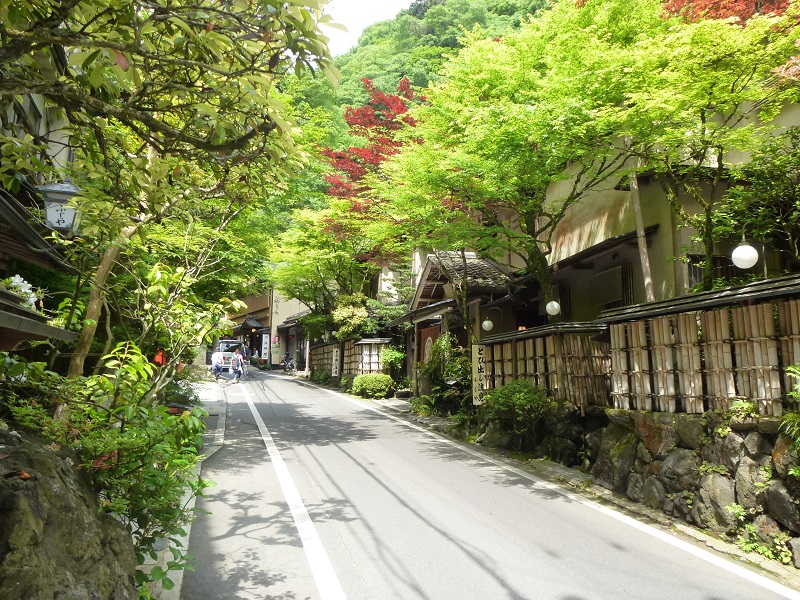
Photo by Japanforeveryone.com
Practical information
| View location on Google Maps | |
| Kifune Shrine | |
| Official website |
|
| 6:00-20:00 (until 18:00 from December to April) | |
| No closing days | |
| Free | |
| From Kyoto Station take the train on the JR Nara Line to Tofukuji Station (2 minutes, 150 Yen). From here take the train on the Keihan Main Line to the Demachi-Yanagi terminus (10 minutes, 270 Yen). From here take the Eizan Railways to Kibune-guchi (30 minutes, 430 Yen). From here continue on foot or take the bus (170 Yen) To get to Demachi-Yanagi station you can get off at the Demachiyanagi ekimae bus stop (lines 4, 17, 102, 201, 203) |
Sanzenin Temple
Sanzenin Temple is a historical site of exceptional beauty and religious importance located in Kyoto Prefecture. Founded in the 9th century, the temple is famous for its splendid architecture, fountains and gardens full of flowers and ancient trees. The highlight of the temple is the main hall, Kannon-do, which houses various statues of Buddhist and Shinto deities. The Sanzenin temple is a place of respite and reflection set against a breathtaking natural backdrop. It is a must-see for anyone visiting Kyoto and wishing to admire the beauty and spirituality of Japanese culture.
Dokudami, CC BY-SA 4.0, via Wikimedia Commons
Practical information
| View location on Google Maps | |
| Official website |
|
| 8:30-17:00 (March to 6 December) 9:00-16:30 (7 December to February) |
|
| No closing days | |
| 700 Yen | |
| From Kyoto station take the underground to Kokusaikaikan station (20 minutes, 290 Yen), from here take bus number 19 (360 Yen, not included in the day pass) From the station take bus number 17 (560 Yen, not included in the day pass) |
Jakkoin Temple
The Jakkoin Temple is an ancient Buddhist temple located in the city of Kyoto. Built in the 14th century, the temple is famous for its traditional Japanese architecture and the beautiful landscaped gardens that surround it. Inside are numerous works of art, including statues of the goddess of time and the Buddhist Kannon. The Jakkoin Temple is also known for being the place where Emperor Go-Daigo was imprisoned for some time. Visiting the temple allows one to discover ancient Japanese culture and appreciate the architectural and scenic beauty of Kyoto.
Practical information
| View location on Google Maps | |
| Official website |
|
| 9:00-17:00 (shorter hours in winter) | |
| No closing days | |
| 600 Yen | |
| From Kyoto station take the underground to Kokusaikaikan station (20 minutes, 290 Yen), from here take bus number 19 (360 Yen, not included in the day pass) From the station take bus number 17 (560 Yen, not included in the day pass) |
Hosenin Temple
The Hosenin Temple is an ancient Buddhist temple located in the city of Kyoto. Built in the 13th century, the temple is famous for its traditional Japanese architecture and beautiful Zen gardens. Inside the main building, visitors can admire numerous works of art and statues of Buddha. The temple is also known for its calm and peaceful atmosphere, perfect for meditation and contemplation. The Hosenin Temple is a place of peace and spirituality, where visitors can immerse themselves in the religious culture of the Japanese Buddhist tradition.
Asturio Cantabrio, CC BY-SA 4.0, via Wikimedia Commons
Practical information
| View location on Google Maps | |
| Official website |
|
| 9:00-17:00 (last entry at 16:30) | |
| No closing days | |
| 800 Yen (including the serving of green tea and a Japanese dessert) | |
| From Kyoto station take the underground to Kokusaikaikan station (20 minutes, 290 Yen), from here take bus number 19 (360 Yen, not included in the day pass) From the station take bus number 17 (560 Yen, not included in the day pass) |
Shorinin Temple
The Shorenin Temple is a fascinating Buddhist temple located in the city of Kyoto, Japan. Founded in the 9th century, the temple is famous for its beautiful landscaped garden and traditional architecture. Inside the temple, visitors can admire various Buddhist artworks, including paintings and ancient sculptures. The highlight of the temple is its garden, with its ponds, bridges and ancient trees, which provide a serene atmosphere. The Shorenin Temple is an ideal place to relax and immerse oneself in the tranquil beauty of Japanese religious culture.
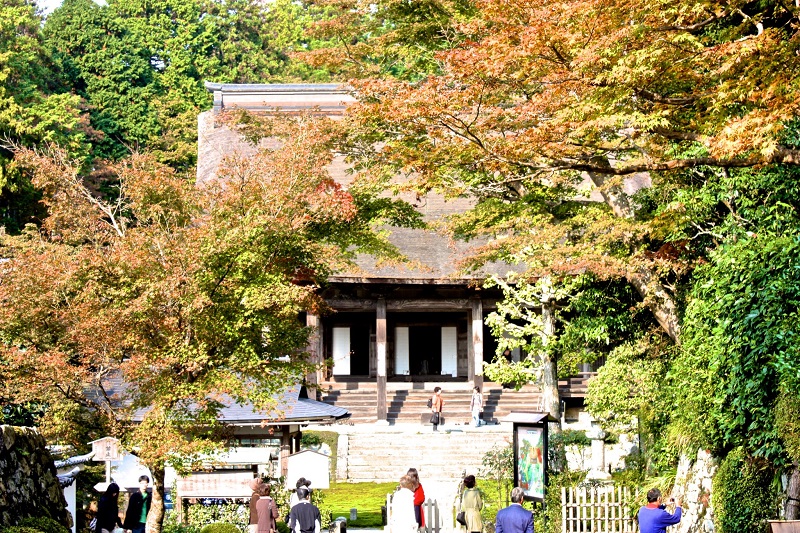
Photo by Kyoto and Nara Dream Trips
Practical information
| View location on Google Maps | |
| Official website |
|
| 9:00-17:00 (last entry 30 minutes before closing time) | |
| No closing days | |
| 300 Yen | |
| From Kyoto station take the underground to Kokusaikaikan station (20 minutes, 290 Yen), from here take bus number 19 (360 Yen, not included in the day pass) From the station take bus number 17 (560 Yen, not included in the day pass) |
Raigoin Temple
The Raigoin Temple is an ancient Buddhist temple located in the city of Kyoto, Japan. Built in the 13th century, the temple is known for its traditional architecture and highly spiritual atmosphere. Inside the complex, visitors can admire numerous Buddha statues and other Buddhist artworks. The temple’s location, surrounded by mountains and forests, makes it perfect for those seeking a quiet and peaceful place to meditate and contemplate the beauty of nature. The Raigoin Temple is an immersive experience in Japanese religious culture, offering a unique perspective on spirituality and inner peace.
Nankou Oronain (as36…, CC BY-SA 3.0, via Wikimedia Commons
Practical information
| View location on Google Maps | |
| 9:00-17:00 | |
| No closing days | |
| 400 Yen | |
| From Kyoto station take the underground to Kokusaikaikan station (20 minutes, 290 Yen), from here take bus number 19 (360 Yen, not included in the day pass) From the station take bus number 17 (560 Yen, not included in the day pass) |
Enryakuji Temple
The Enryakuji Temple is one of the oldest and most important temples in Japan, located on Mount Hiei near Kyoto. Built in the 9th century, the temple was founded by the monk Saicho and played a significant role in the development of Buddhism in Japan. Besides its fascinating architecture, the temple is famous for being an important centre for teaching and meditation. Visitors can explore its vast grounds, admire the historic buildings and enjoy panoramic views of the city of Kyoto. Enryakuji Temple is a place of great historical and spiritual importance.
IMPORTANT: the main building is under renovation until 2026
Oilstreet, CC BY-SA 3.0, via Wikimedia Commons
Practical information
| View location on Google Maps | |
| Official website (PDF brochure) |
|
| 8:30-16:30 (March to November) 9:00-16:00 (December) 9:00-16:30 (from January and February) Saito and Yokawa areas open 30 minutes later and close 30 minutes earlier |
|
| No closing days | |
| 1000 Yen (entrance to all three zones) 500 Yen (Treasure House) |
|
| From Kyoto Station take the train on the JR Nara Line to Tofukuji Station (2 minutes, 150 Yen). From here take the train on the Keihan Main Line to the Demachi-Yanagi terminus (10 minutes, 270 Yen). From here, take the Eizan Railways to Yase-Hieizan-guchi (15 minutes, 270 Yen). From here, take the Eizan Cablecar and then the Eizan Ropeway (20 minutes, 870 Yen one way, 1660 round trip). Then another 5 minutes by bus or 30 minutes on foot To get to Demachi-Yanagi station, you can get off at Demachiyanagi ekimae bus stop (lines 4, 17, 102, 201, 203) |
Kozanji Temple
The Kozanji Temple is a hidden treasure located in the city of Kyoto, Japan. Founded in the 13th century, the temple is known for its beauty and historical value. Its well-preserved structures and landscaped gardens offer spectacular views, attracting visitors from all over the world. Inside the temple, valuable works of art can be admired, including important Buddhist paintings and sculptures. Kozanji Temple is a perfect place to immerse yourself in Japanese culture and spirit, with its serene atmosphere and timeless elegance.
Fraxinus2, CC BY-SA 3.0, via Wikimedia Commons
Practical information
| View location on Google Maps | |
| Official website |
|
| 8:30-17:00 | |
| No closing days | |
| Free 800 Yen to see the ‘first manga’ 500 Yen during autumn |
|
| Direct bus from Kyoto Station by JR Bus (Japan Rail Pass valid) (50 minutes, 530 Yen) Takao bus stop (line 8) The stop is outside the Kyoto flat zone and you will need to pay an extra charge for your ticket or pass |
Jingoji Temple
The Jingoji Temple is a magnificent Buddhist temple located in the city of Kyoto, Japan. Founded in 824, the temple is one of the oldest in the region and still retains its beauty and spirituality. Featuring a historic structure and breathtaking scenery, Jingoji Temple offers visitors a true experience of tranquillity and reflection. Its sacred halls hold important Buddhist artworks, including statues and paintings. The temple is also known for its rich history and its connection to important figures in Japanese Buddhism. A visit to Jingoji is a true spiritual and cultural journey.
663highland, CC BY-SA 3.0, via Wikimedia Commons
Practical information
| View location on Google Maps | |
| Official website |
|
| 9:00-16:00 | |
| No closing days | |
| 600 Yen | |
| Direct bus from Kyoto Station by JR Bus (Japan Rail Pass valid) (50 minutes, 530 Yen) Takao bus stop (line 8) The stop is outside the Kyoto flat zone and you will need to pay an extra charge for your ticket or pass |

